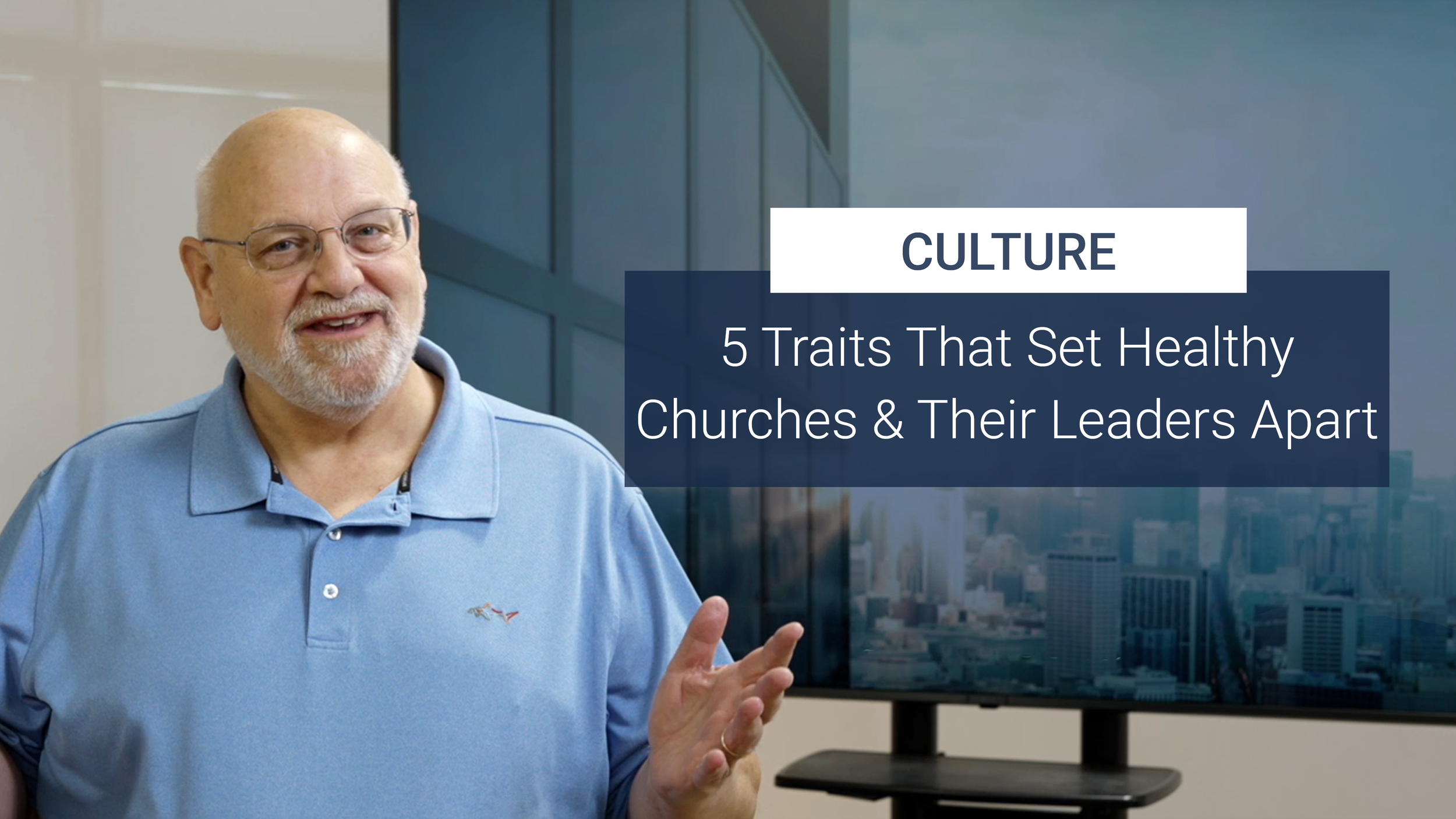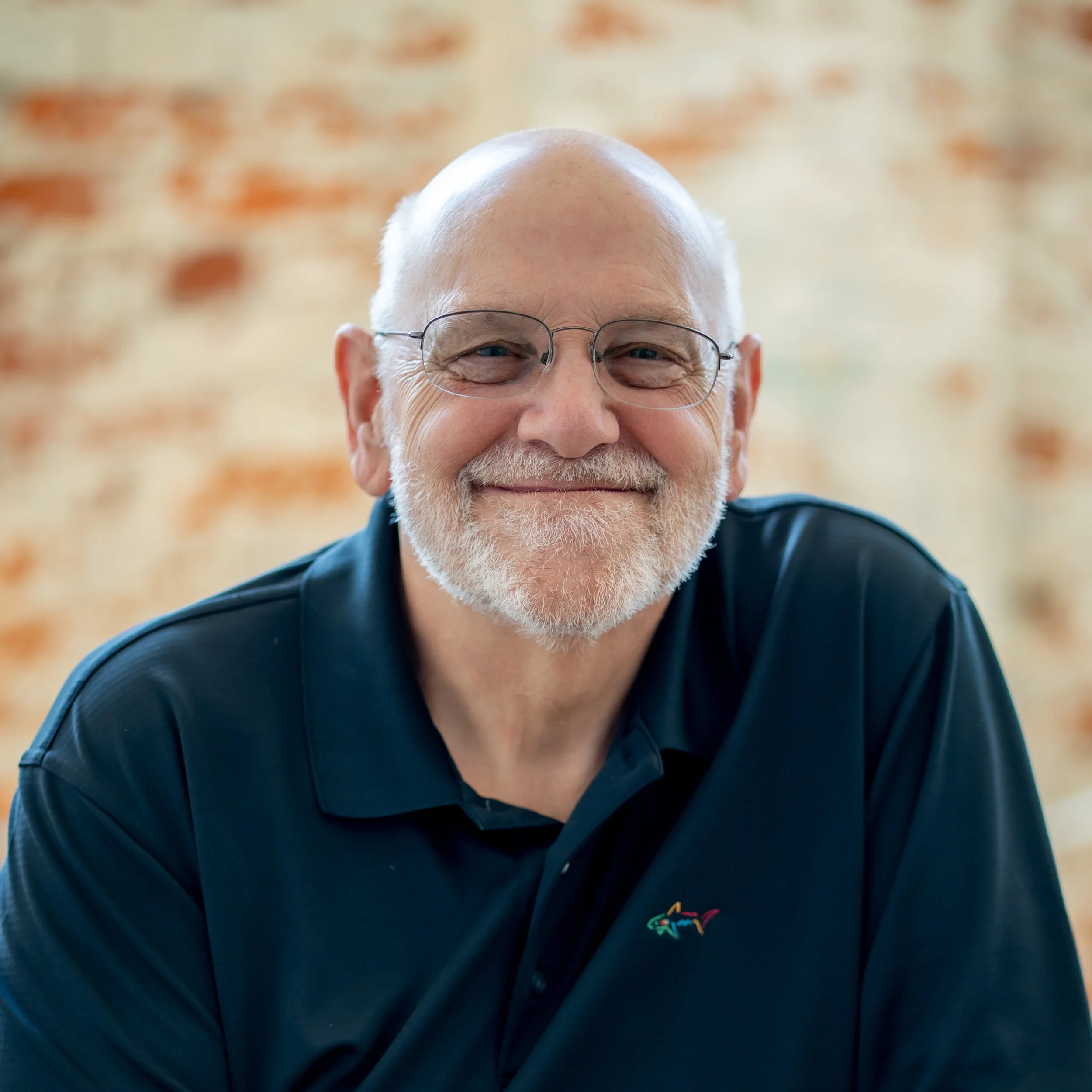Today, I want to share about the traits of the healthiest churches and leaders. When we talk about traits, we are talking about behaviors that are consistently present and can be observed over a long period of time.
We certainly could point out the traits of unhealthy churches. Lots of ministries suffer from a lack of good health, and, therefore, a lack of momentum, leadership, and morale. But today, we want to focus on what we see when looking at healthy churches and healthy leaders. Sometimes these churches begin in unhealth or crisis, but as they get good counsel and put into motion good behaviors, they become healthy. Here are 5 traits of healthy churches and their leaders.
1. Calling over Culture & Culture over Strategy
Many people have entered vocational ministry because they like the culture and want to work at a church. But what we are seeing among these healthy leaders and healthy churches is more of a sense of personal calling. I like to think of it as an inescapable burden. “I have to do this.” “This is God’s call in my life.” So, it’s not a vocational choice of “I decided I wanted to be a pastor instead of an airplane pilot.” This is “God has been working in my life, and I feel a calling to do this.”
When you join a team because of culture, are you joining a team where most people feel that sense of calling and feel that purpose? Jim Collins had a very famous saying, something like this: ‘If you get the right people on the bus, you can drive the bus anywhere that you want it to go.’ It is a problem when you have people who are just doing a job, not fulfilling a calling, because it will reflect in your culture.
Strategy is what we do and how we go about doing it. So, a good culture made up of people who are feeling that sense of calling and inescapable burden will often then be able to create a great strategy. If you start with strategy and try and build culture, then it’s like the old saying goes, ‘culture eats strategy for breakfast.’ So, start with a calling. Let that be more important even than the culture. And when you have the right people, build that culture. When you have the culture, you are going to find that making a strategy to create momentum is so much easier.
2. Relational over Structural (Personal, not Programmatic)
Healthy churches and healthy leaders understand the difference between relational power and structural power. Think of structural as positional power. If I’m at the highest point in the org. chart, I have more power, more authority, and more influence. That used to be true, and to some extent, it will always be true. Every organization needs some structure. But we are finding that the leaders of the healthiest churches (especially among younger leaders) understand that there is a relational dynamic going on. It’s about being authentic – really hearing you, validating you, coaching you, and also allowing you to speak into my life. It’s what the book of Proverbs talks about, iron sharpening iron. So, a leader who puts more emphasis on structure at the expense of the relational dynamic will likely also have a less-than-healthy team.
3. Agility over Rigidity
Healthy churches and healthy leaders can stay agile instead of being rigid. We are big proponents of having a plan that has priorities, strategies, tactics, metrics, and milestones. And when you have a plan, you need agility, the ability to move around within that plan. It is kind of like a budget. There will be things that come in that compromise what you ideally thought would happen.
Think of it this way: when you are agile, you know that problems are going to bubble up, and you know good opportunities are going to present themselves. The wise, healthy leader of a healthy church acknowledges that those are often dynamics that get you off track, so what do they do? They keep a steady hand on the rudder. They deal with problems, they look at opportunities, but they don’t allow themselves to be taken off course, losing the momentum or focus that they had.
People who are very rigid often have this demand that we stay on the plan at whatever cost, often at the expense of the people they are working with. But healthy leaders can ride the waves of opportunity and problem-solving that come their way.
4. Pipeline over Presumption
Presumption, in this case, means that if someone leaves, we go out and search for someone else. A pipeline, on the other hand, means that we are going to train leaders from the ground up. And the younger you start, the better. You can often see leadership characteristics starting to manifest themselves in junior high or senior high. And by the time a person is a young adult, you should be investing in them and building the pipeline that helps you get younger. Decision-makers end up determining the kind of people who will be attracted to that ministry. So, think about starting a leadership institute or cohort. We have helped churches do that, and they are building their future leaders as they go. Seminary and Bible college attendance is down. It’s harder to find people who have that sense of calling, understand your culture, and are able to step in quickly. Having bench depth will help you a great deal. So, think in terms of pipeline, not presumption.
5. R.O.I over I.O.U.
Healthy leaders and healthy churches consider the R.O.I., not just the I.O.U. principle. In this case, I.O.U. means “Let’s figure out what God wants us to do, and then we are going to do it by faith.” That sounds good until what you were trying to do doesn’t work out, but it still costs time, money, and effort. And while there is no guarantee that you’ll get a return on every investment, healthy leaders are much more savvy than they used to be about understanding the real cost. They look at what it costs when we add in the overhead of salaries, utilities, building maintenance, and everything that goes into making an activity possible. They evaluate missions, student ministry, children’s ministry, and even their Sunday morning experience to determine if they are getting the best return for the stewardship of the money people have given.
In the healthiest churches, people are not as quick to say, “God told us this is what we are supposed to do,” and then expect everybody else to pay for it. Instead, there is more of a bubbling up that is happening with people. They want to know that their time and resources are creating good momentum. I commend leaders who think strategically and don’t make assumptions that “we will do what we think we want to do and somehow pay for it.” Think of stewardship as one of those markers of a healthy church and a healthy leader.
I hope you gained value from what we talked about today. If you need help with some of the things we talked about today, give us a call, send us an email, and let us know how we can help you.
Contact us to learn how our experienced coaches can help you create a culture of trust in your church, business, or nonprofit organization.
Dave Marks serves as Vice President and Senior Consultant at The Center Consulting Group, bringing over 35 years of church ministry experience, including 23 years as a senior pastor. He holds an M.S. in Organizational Leadership and a D.Min. in Leadership. Dave partners with church and nonprofit leaders to resolve conflict and restore relationships, build high-performing teams, analyze and strengthen organizational culture, and educate and train staff and volunteers. Dave is passionate about coaching others towards organizational and leadership health, and refining systems and processes for sustainable growth. His holistic approach integrates strategic planning, leadership development, and organizational diagnostics to help ministries thrive in every season. An avid follower of NASCAR and Indy Racing, Dave brings the same passion and precision from the racetrack to every consulting engagement.




![Public Speaking: Using AI Ethically & Effectively to Create a Powerful Speech [VIDEO]](https://images.squarespace-cdn.com/content/v1/571fc0ea1d07c0fd6d72c167/1763735597032-XMIKMQ1D63PRC1QJ6FVV/ai+speech+blog.png)
![Preparing for the (Expectedly) Unexpected [VIDEO]](https://images.squarespace-cdn.com/content/v1/571fc0ea1d07c0fd6d72c167/e4193bcf-29f7-46c2-be12-9116791d40cf/unexpected+blog.png)
![Fundraising: How to Raise Funds for Your Nonprofit [VIDEO]](https://images.squarespace-cdn.com/content/v1/571fc0ea1d07c0fd6d72c167/1757619882819-6OARWR0QU11M7LA0ABYL/fundraising+blog.png)
![Culture: 5 Traits That Set Healthy Churches & Their Leaders Apart [VIDEO]](https://images.squarespace-cdn.com/content/v1/571fc0ea1d07c0fd6d72c167/1755633039402-KVJFNJWG0RKBCMLS5FNB/healthy+blog.png)
![Vision: 3 Must-Have Traits of Every Successful Visionary Leader [VIDEO]](https://images.squarespace-cdn.com/content/v1/571fc0ea1d07c0fd6d72c167/1749484247758-ITEGD2LZZ716112KLHXZ/visionary+blog.png)
![Advisory Boards: Should Your Business Have an Advisory Board? [VIDEO]](https://images.squarespace-cdn.com/content/v1/571fc0ea1d07c0fd6d72c167/1747149791510-HU20SY0O8LRPEHGMC6HD/advisory+blog.png)
![Leadership: How to Be a World Class Boss [VIDEO]](https://images.squarespace-cdn.com/content/v1/571fc0ea1d07c0fd6d72c167/1744640489138-X5LUNZT3JTRQYSSZXV1C/boss+thumbnail.png)
![Conflict: The Importance of Having Tough Conversations [VIDEO]](https://images.squarespace-cdn.com/content/v1/571fc0ea1d07c0fd6d72c167/1741365599296-KTWEJ5PTNH1BX2GJ9REJ/Conversations+blog.png)
![Exit Planning: The Challenge of Business Exit Planning & Why It Matters to You [VIDEO]](https://images.squarespace-cdn.com/content/v1/571fc0ea1d07c0fd6d72c167/1738339040891-VIW87N2NCZUCKLYNOHB6/exit+blog.png)

![Teams: Is Your Team Dysfunctional? [VIDEO]](https://images.squarespace-cdn.com/content/v1/571fc0ea1d07c0fd6d72c167/1733243870005-NOI69Z74DLNVLIB8MRRJ/dysfunctional+blog.png)
![How to Recruit and Inspire Volunteers [VIDEO]](https://images.squarespace-cdn.com/content/v1/571fc0ea1d07c0fd6d72c167/1728421227208-6JAUFVXEJW5KK6YE58JR/volunteers+blog.png)
![Trust: 4 Steps to Rebuild Damaged Trust [VIDEO]](https://images.squarespace-cdn.com/content/v1/571fc0ea1d07c0fd6d72c167/1725969594417-7AN9PJO2X8TTR77ACDFP/trust+blog.png)
![Blind Spots: How to Identify & Avoid Blind Spots in Your Organization [VIDEO]](https://images.squarespace-cdn.com/content/v1/571fc0ea1d07c0fd6d72c167/1722610352594-FAXECLPC61QYJH2I5YT8/blind+spot+blog.png)
![Family Business: Will the Family Business Destroy Our Family? [VIDEO]](https://images.squarespace-cdn.com/content/v1/571fc0ea1d07c0fd6d72c167/1718027719043-MU9AYPTQ7GM4XWT9EGD1/destroy+blog.png)
![Teams: How to Breathe New Life into a Broken Team [VIDEO]](https://images.squarespace-cdn.com/content/v1/571fc0ea1d07c0fd6d72c167/1714749389916-G2CWVK8OM1JJSD9058CL/breathe+blog.png)
![Planning: The Power of Planning [VIDEO]](https://images.squarespace-cdn.com/content/v1/571fc0ea1d07c0fd6d72c167/1712597764732-WHRZPRLZ6V78CBGKBPZA/PLanning+blog.png)
![Leveling Up Your Leadership: Becoming an Effective Senior Leader [VIDEO]](https://images.squarespace-cdn.com/content/v1/571fc0ea1d07c0fd6d72c167/1710266273593-QN3HEBJ5FII4GKQFH91Q/leveling+up+blog.png)
![Recruiting & Retaining “Mature” Team Members [VIDEO]](https://images.squarespace-cdn.com/content/v1/571fc0ea1d07c0fd6d72c167/1707849950823-Y5WJLYXM6ZPU55TKG27Y/recruitment+blog.png)

![Gaslighting: How to Identify It & Take Back Control [VIDEO]](https://images.squarespace-cdn.com/content/v1/571fc0ea1d07c0fd6d72c167/1699381799669-Y6XNYG2X3ZD1US80XAFY/Gaslighting+blog.png)
![Decision-Making: Why Smart Leaders Do Dumb Things [VIDEO]](https://images.squarespace-cdn.com/content/v1/571fc0ea1d07c0fd6d72c167/1696947285846-ZIA5M26B5AF9SRFGWFPV/Dumb+Things+blog.png)

![Meeting Effectiveness: 4 Different Types of Meetings & Why It Matters [VIDEO]](https://images.squarespace-cdn.com/content/v1/571fc0ea1d07c0fd6d72c167/1690296011536-23CWWE2VJ40QJ0UA1EZY/meetings+blog.png)
![Leadership: 4 Directions You Need to Lead [VIDEO]](https://images.squarespace-cdn.com/content/v1/571fc0ea1d07c0fd6d72c167/1689105063370-WQTIN47T3TP8YXQM3RMP/directions+blog.png)
![Leadership Model: Are You a Cheerleader, Drill Sergeant, or Coach? [VIDEO]](https://images.squarespace-cdn.com/content/v1/571fc0ea1d07c0fd6d72c167/1686670057921-DJ286QE8OZOQKE22SZAL/coach+blog.png)
![Developing Women Leaders: The Power of Leader Efficacy [VIDEO]](https://images.squarespace-cdn.com/content/v1/571fc0ea1d07c0fd6d72c167/1683572272369-EJ4N7BBXL0832YUM4XUN/Women+efficacy+blog.png)


![Innovation: How To Make Innovation Part of Your Leadership [VIDEO]](https://images.squarespace-cdn.com/content/v1/571fc0ea1d07c0fd6d72c167/1675365017628-0ZAPR2WCAM23JVDHM34I/Innovation+blog.png)